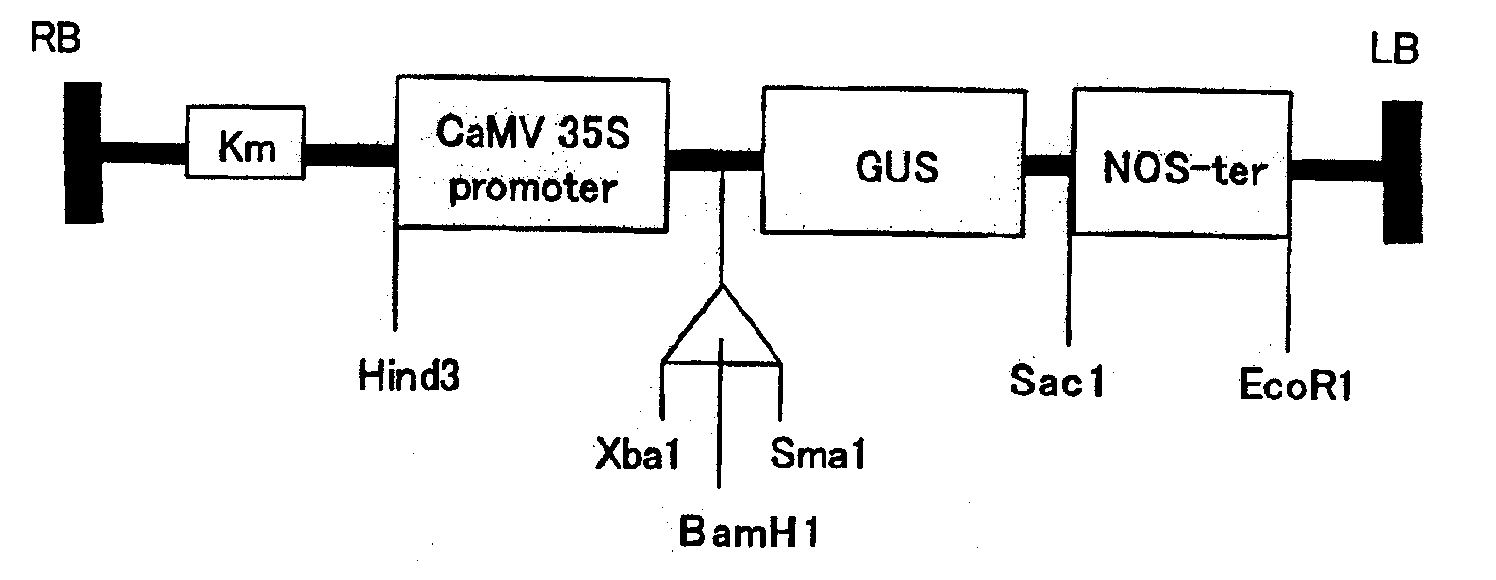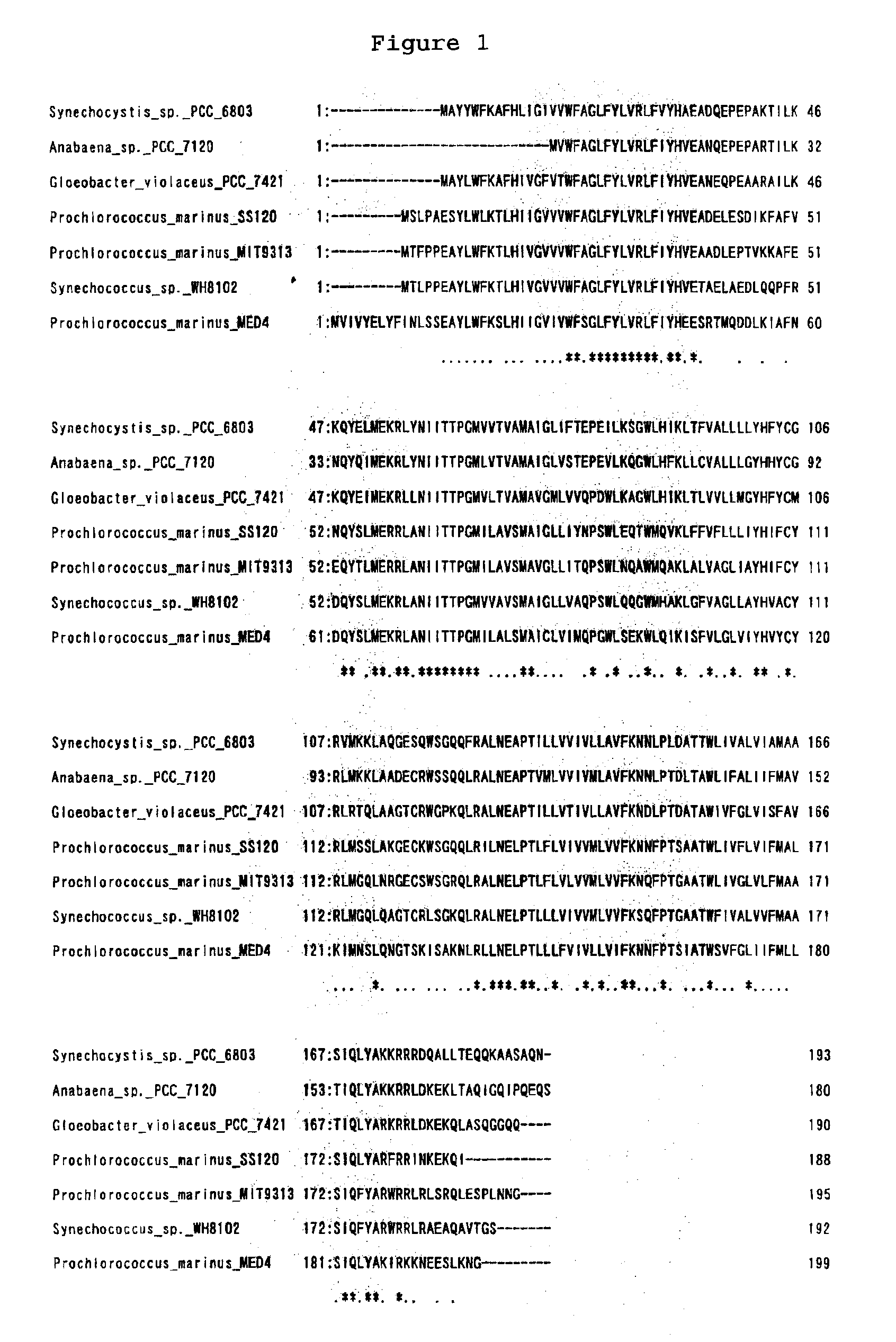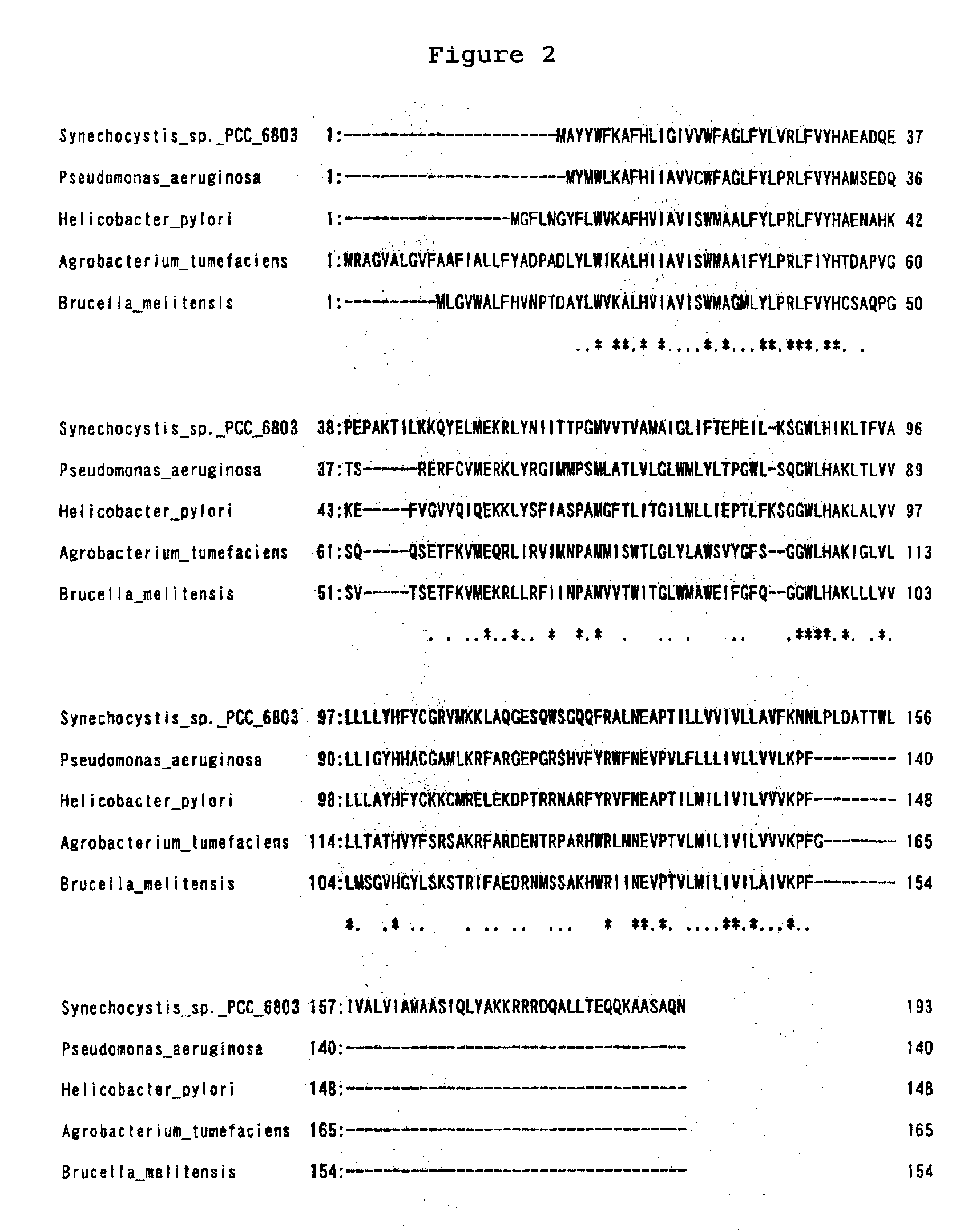Protoporphyrinogen oxidase having activity of imparting resistance against acifluorfen and gene thereof
a technology of protoporphyrinogen oxidase and acifluorfen, which is applied in the field of protoporphyrinogen oxidase having the activity of imparting resistance against acifluorfen, can solve the problems of not being able to clone the full-length protoporphyrinogen oxidase gene, and not being able to avoid the generation of fragments of too large a siz
- Summary
- Abstract
- Description
- Claims
- Application Information
AI Technical Summary
Benefits of technology
Problems solved by technology
Method used
Image
Examples
example 1
Introduction of Arabidopsis-Derived Protoporphyrinogen Oxidase Gene into Cyanobacterium
[0090]Total RNA was extracted from rosette leaves of Arabidopsis by using RNeasy RNA extraction kit (Qiagen). Poly(A)+ mRNA was purified from the total RNA by using a conventional method. The poly(A)+ mRNA was used as a template for synthesis of cDNA using ReverTra-Plus-Kit (TOYOBO). An Arabidopsis protoporphyrinogen oxidase gene (1.6 kbp) was amplified by PCR using the synthesized cDNA as a template, a primer ATHPPOX.Aself (SEQ ID NO: 3) containing a restriction enzyme AseI site, a primer ATHPPOX.r (SEQ ID NO: 4), and TaKaRa LA Taq polymerase (TAKARA). Then the PCR product was digested with AseI. The PCR was performed with 28 cycles of denaturation (94° C., 30 s), annealing (52° C., 45 s), and extension (72° C., 120 s).
[0091]pFS10, which can be used for transformation of cyanobacteria and has kanamycin resistance gene, was used as a vector (Jansson, et al. Methods Enzymol (1998) 297: pp 166). The...
example 2
Generation of Cyanobacterium Mutant Using a Transposon
[0094]Genome extracted from Synechocystis PCC6803 was partially digested with Tsp5091 and genomic plasmid library was constructed by using lambda ZAP II vector kit (Stratagene). A transposon was inserted into the genomic plasmid library by using EZ::TNTM Insertion Kit (Epicentre) according to a manual disclosed by Epicentre. With this transposon tag-inserted genomic plasmid library of Synechocystis, AT strain was transformed by homologous recombination to generate Synechocystis mutants expressing Arabidopsis-derived protoporphyrinogen oxidase.
example 3
Screening for Cyanobacterium Protoporphyrinogen Oxidase-Deficient Mutants
[0095]The Synechocystis mutants generated in Example 2 were screened for cyanobacterium protoporphyrinogen oxidase-deficient mutants by using acifluorfen sensitivity as a selectable marker. Specific procedures are described below.
[0096]The Synechocystis mutants generated in Example 2 were plated on BG11 agar medium containing acifluorfen at a final concentration of 500 μM and cultured statically under continuous radiation by white fluorescent light (light intensity: 30 μmol s−1m−2) at 30° C. for two weeks. Culture on acifluorfen-free BG11 agar medium was also carried out in the same way. Based on the results of these cultures, nine mutants that grow in the absence of acifluorfen but are killed in the presence of acifluorfen were selected. Among these nine mutants, a mutant the growth of which was most inhibited was named 3216 mutant and insertion site of the transposon tag was analyzed as described below. The t...
PUM
| Property | Measurement | Unit |
|---|---|---|
| Fraction | aaaaa | aaaaa |
| Fraction | aaaaa | aaaaa |
| Fraction | aaaaa | aaaaa |
Abstract
Description
Claims
Application Information
 Login to View More
Login to View More - R&D
- Intellectual Property
- Life Sciences
- Materials
- Tech Scout
- Unparalleled Data Quality
- Higher Quality Content
- 60% Fewer Hallucinations
Browse by: Latest US Patents, China's latest patents, Technical Efficacy Thesaurus, Application Domain, Technology Topic, Popular Technical Reports.
© 2025 PatSnap. All rights reserved.Legal|Privacy policy|Modern Slavery Act Transparency Statement|Sitemap|About US| Contact US: help@patsnap.com



